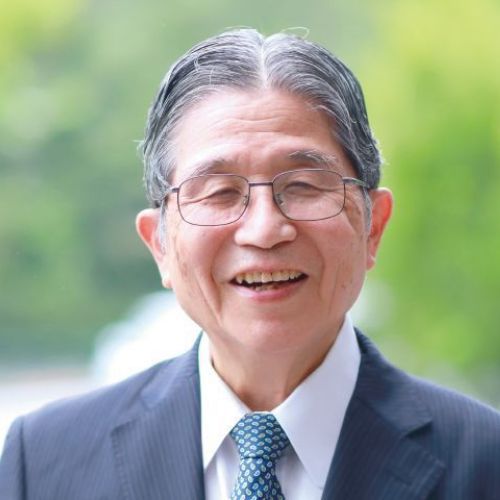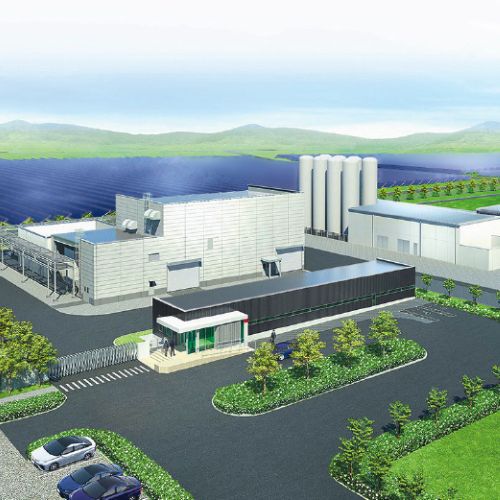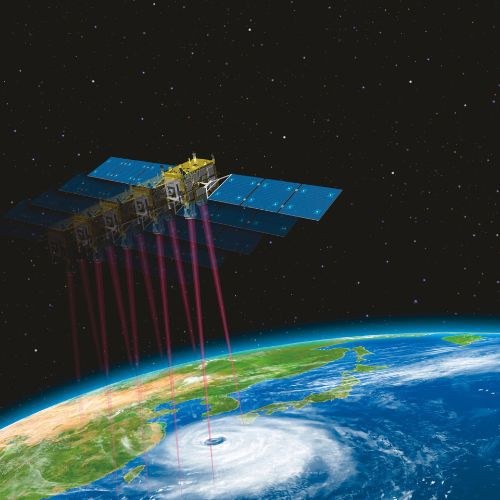There are places where food is left over and thrown away and places where people are suffering from poor harvests, starvation, and malnutrition. What should we do to eliminate this “food imbalance?” Japanese High school students came up with ideas for solving these problems.
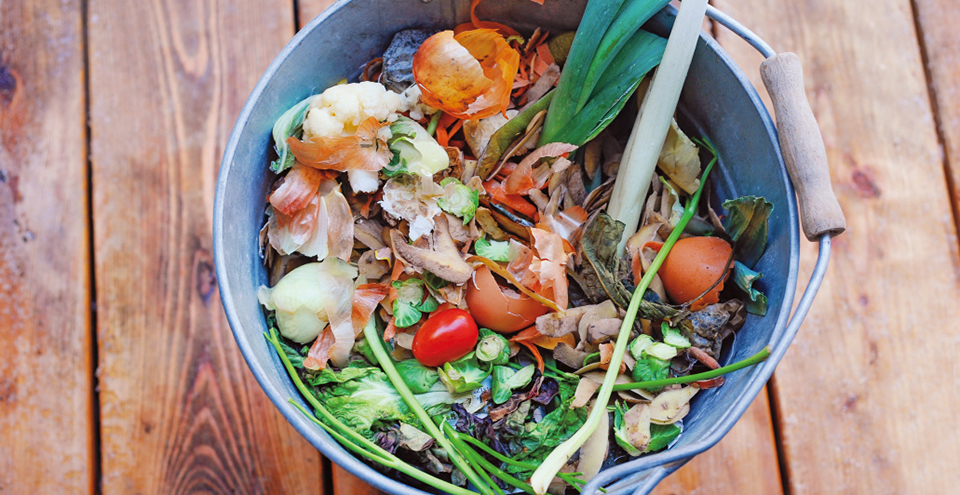
It is said that, in the world, one-third of the food produced is discarded.
Sustainable Development Goals (SDGs) have a variety of goals, one of which is related to hunger and ensuring food security. 820 million people in the world suffer from famine. On the other hand, a large amount of food that could be consumed has been discarded, and the world's annual food waste has reached 1.3 billion tons.
In order to eliminate such “food imbalance,” it will be necessary for each consumer not only to reduce their food waste, but also to create a system to properly manage the remaining food and transport it to places where it has not been delivered. In addition, technical assistance for improving agricultural productivity would also be helpful.
At the ministerial meetings of the G20 held in Japan in June 2019, two groups of high school students focused on food distribution imbalances and each group made proposals on a new logistical system of food distribution and efforts to improve food productivity (see articles below).
Student Proposals
Managing Food Safety and Efficient Distribution
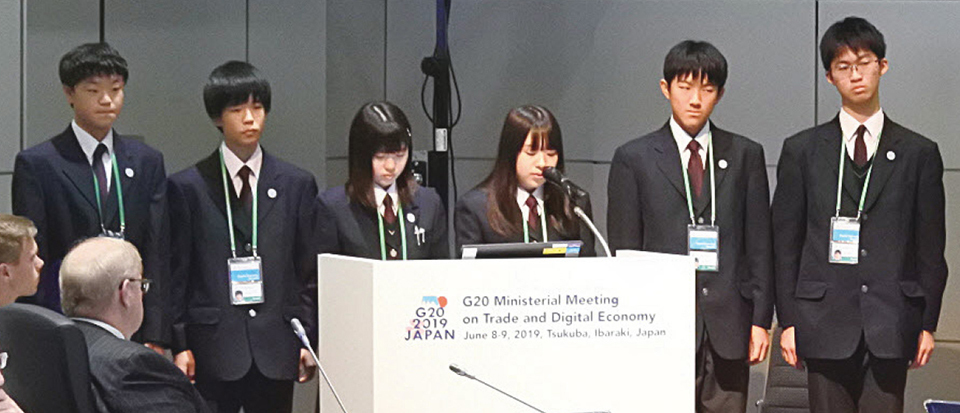
Presentation in front of ministers from each country at the G20 Ministerial Meeting on Trade and Digital Economy.
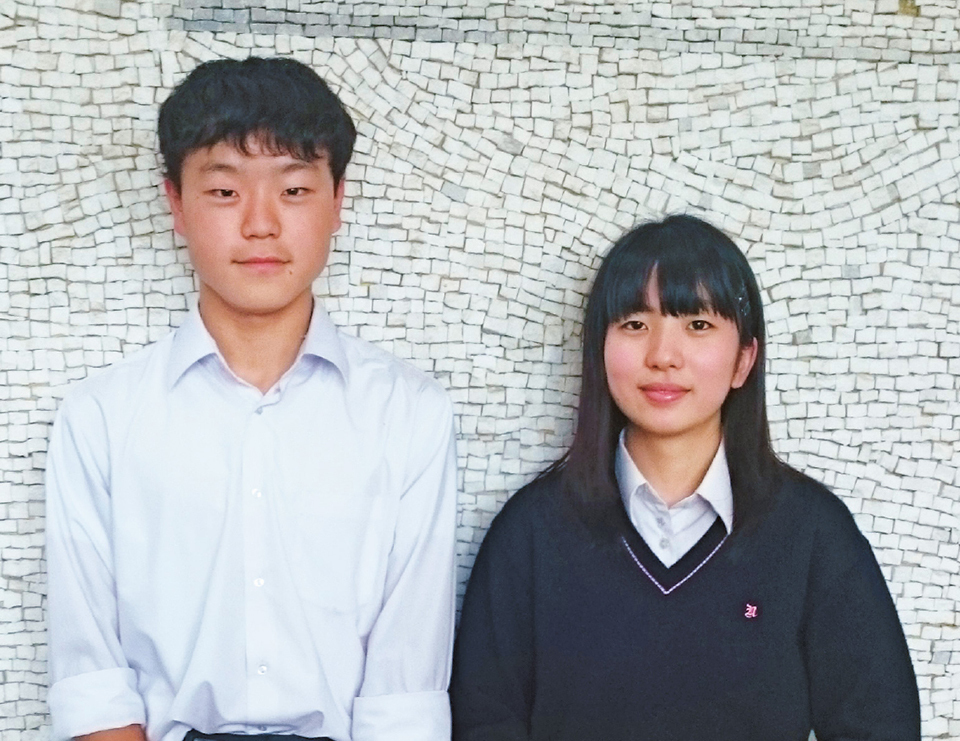
Kanazawa (left) and Sasao were pleased that the ministers listened to them attentively.
At the G20 Ministerial Meeting on Trade and Digital Economy held in Tsukuba City, Ibaraki Prefecture, six second-year high school student representatives of the Ibaraki Prefectural Namiki Secondary School proposed the “Innovative Food Transportation System.” Rintaro Kanazawa, who participated in the proposal, said, “Students who volunteer at the local children's cafeteria pointed out that food, especially fresh food products, do not reach the places where they are necessary, and therefore began searching for a new transportation method.” They proposed a system where the government manages foodbanks and quickly delivers surplus food to people who need it, by using drones or a hyperloop (a next-generation high-speed means of transportation). The principal attribute of this system is its capability to quickly determine the safety of food through the use of AI, and to transport it to multiple regions and remote islands. In the future, if people around the world can have equal access to eat safe food, it would lead to a solution of “zero hunger” in the SDGs.
According to Yu Sasao, who participated in the proposal, the idea was summarized from “various ideas from 150 students in the same grade,” and six individuals finalized it into its present form. “I learned about hyperloop from the United States, where research on this is very advanced, and thus, the plan became even more tangible. In addition, we interviewed foreign students from the University of Tsukuba about the situation of flying drones in their home countries and on the merits and demerits on using them, which led to further discussions.” Kanazawa said, “I was worried about the proposal, because it was still far from being realized and has some areas which may be still unrealistic. I was pleased, however, that the ministers listened seriously. I'd like to use my time off to learn more about how food banks work in Japan.”
Student Proposals
Agriculture Olympics to Share Farm Technology
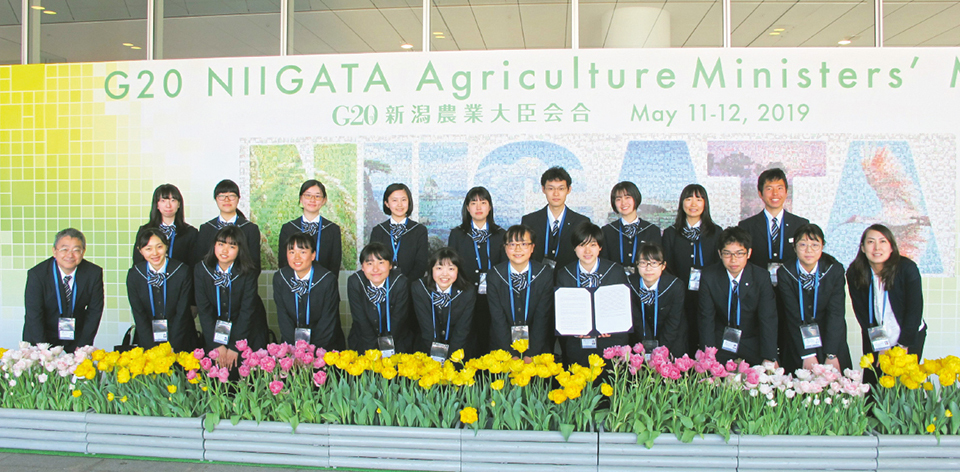
Students making new announcements on sustainable agriculture at the G20 Agriculture Ministers’ Meeting.
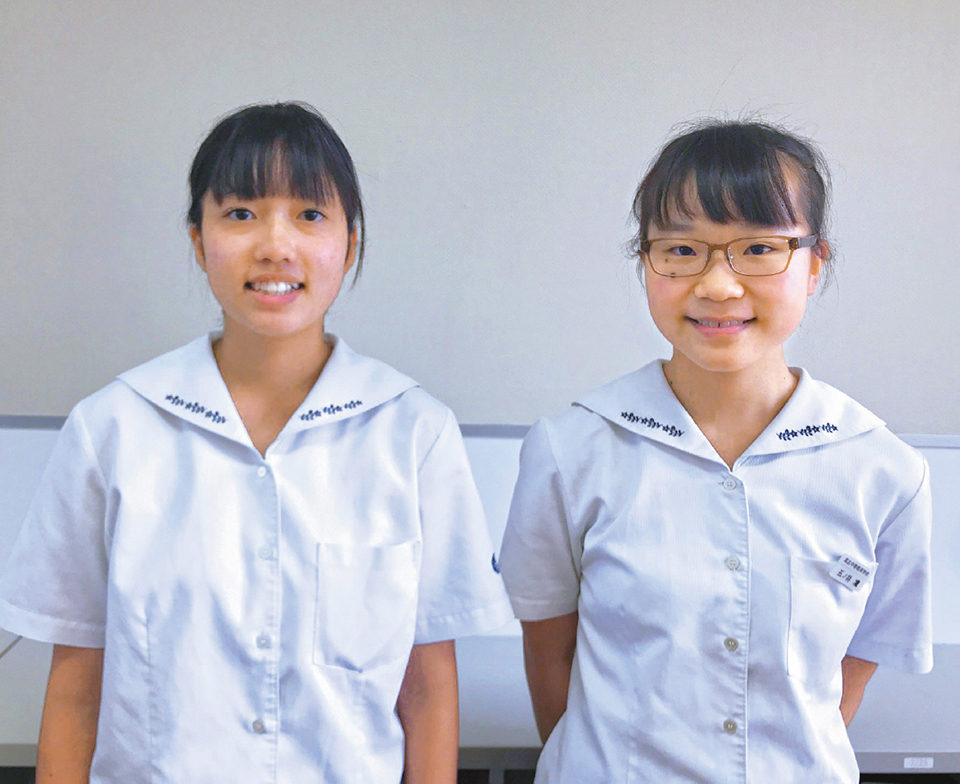
Koizumi (left) and Gonoi learned the importance of mutual collaboration with others while developing their proposals.
At the G20 Agriculture Ministers' Meeting held in Niigata City, Niigata Prefecture, where agriculture is flourishing, an announcement was made by 19 second-year high school student volunteers from the Niigata Municipal Kohshi Secondary School. One of them, Rin Gonoi, said,“With 19 people working on the theme of sustainable agriculture, we had a lot of discussions and sometimes conflicts. Even though we were facing the same direction, we realized the difficulty of putting together our opinions.” They focused on the issue of water. “Although in Niigata, where we live, we are blessed with water, but worldwide there is a shortage of water. We thought it was an important theme.” They proposed the Agriculture Olympics because two-thirds of the world's precious groundwater is used for crop cultivation and irrigation, which is leading to the depletion of freshwater and making food production more difficult.
“Every country has different environments and situations, but what they have in common is the importance of food. We felt that we all had to solve the problem together, so we thought about a system where everyone could participate,” said Haruka Koizumi. The idea was to create a team of developed and developing countries with similar climates and geographical conditions, to share the process and results of exploring better cultivation methods and mechanizations with the world. In this way, we would share “a feeling of gratitude towards food” and this could lead to a world free from hunger and conflict.
“Another aim of the Agriculture Olympics is to change the one-way traffic of support from developed countries to developing countries,” Koizumi adds. “I was able to set a goal to learn more about agriculture and the environment at university.”


























